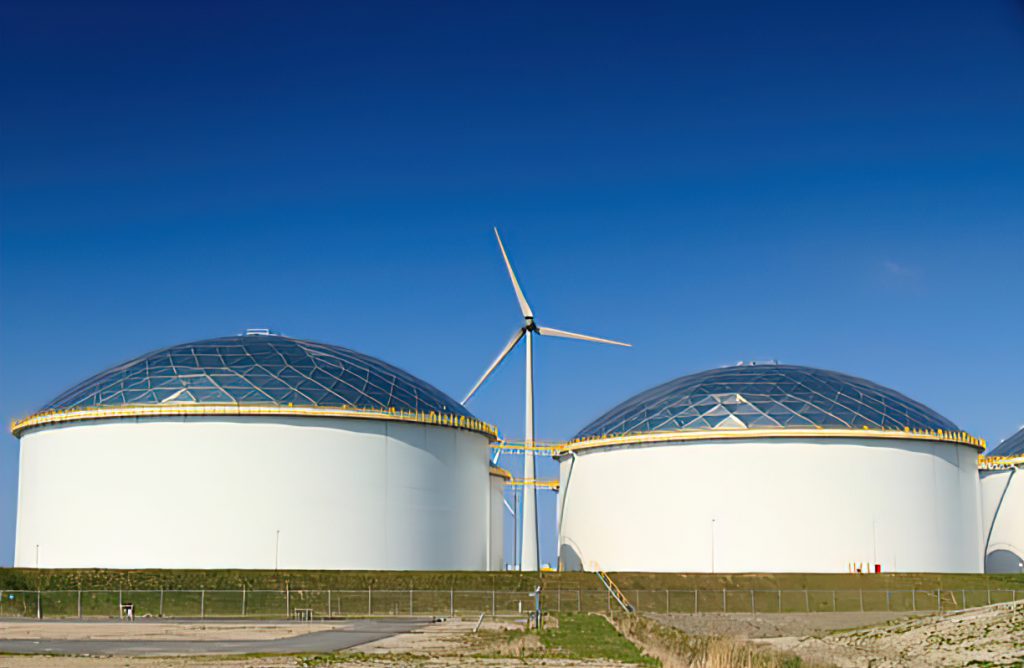Why US energy companies should consider diverting investment capital from new drilling to renewables

By Dr. Ian Palmer
The world can address greenhouse gases (GHG) in different ways. The direct way is by reducing fossil fuel production, the main source at 73% of global GHG, and investing in renewables. Europe is following this approach.
Countries and companies in Europe
Denmark, leading the world in wind power, recently stopped exploration for oil and gas, and plans to finish oil production by 2050. Wind power creates 50% of their electricity, more than any other country (US is 7%). They also plan to build an artificial, green energy island, starting in 2026, that would collect and store energy from an offshore wind system, for a cost of $34 billion.
Norway’s legacy is hydropower, which supplies 67% of in-country energy. Their GHG emissions per capita are only half of those in the US. They also lead the world in uptake of electric vehicles (EVs), now at 60% of new sales, due to national policy incentives like VAT and carbon tax reductions for EVs. The kicker is that Norway has a vibrant oil and gas industry, most of it exported along with a high carbon footprint. But Equinor are developing offshore wind systems, even partnering with the UK’s BP to supply electricity to New York City.
BP has committed to be 40% invested in renewables by 2030. They are studying plans for a large blue hydrogen plant at Teesside in the UK that will by 2030 provide 20% of UK’s hydrogen production used in transportation.
In France, TotalEnergies (a recent name change) have invested $8 billion in renewables since 2016, including $2.5 billion in Adani Green Energy, where they share a 50% partnership in the company’s solar power systems.
By 2021, Shell in Germany will provide 10 MW of green hydrogen. In Ireland, they will be a 51% stakeholder in a 300 MW wind farm.
It’s clear the European continent is teeming with examples of integrating renewables into their future.
US oil and gas companies
One indirect way for reducing GHG is by greening their own operations. One alternative is to replace dirty diesel engines by a natural gas turbine and electric pumps – even using gas from the same well. But this is only 25% of their production and distribution footprint – reducing it by half would only be a minor contribution to reducing the 73% of global GHG.
Another way to reduce GHG is by cleaning up methane leaks from wells, pipelines, and processing facilities. The US Senate passed in June 2021 a new bill to remove methane leaks as a cause of air pollution in oil and gas operations and allow EPA to enact stricter methane regulations.
But only 10% of all GHG emissions in the US are from methane, and less than half are due to methane leakages. So if the cleanup gets it down to zero, this is a drop of only 5% of the total 73% fossil fuel contribution – even though all methane emissions globally are causing 25% of global warming according to EDF.
Yet another US approach is carbon capture and storage (CCS). This has a natural fit in the US because the oil and gas industry have been doing it for decades. ExxonMobil is storing 9 million tonnes of CO2 each year, equal to 11 million car exhausts for one year. The company plans to invest $3 billion for 20 new CCS facilities and some of these will bury CO2 from separate industries, such as cement or steel plants.
However, CCS is a non-direct approach because it doesn’t stop the emission of GHG from fossil fuels. It just captures and buries the resulting GHG. Based on the net-zero concept CCS will be important to compensate for, or offset, the leftover fossil GHG (it’s an escape hatch).
But the appetite of legacy US energy companies has largely stayed focused on what has always been the main meal: oil and gas production. The US picture seems to maintain the shale revolution as first priority, to sustain its profits and its jobs. This makes it hard for oil and gas companies to suddenly start thinking about divesting and reinvesting in renewable energies.
Redirecting investments
The result is that Europe leads in the direct reduction of oil and gas production – and changing to
The demand for US oil and gas is going to fall if the Biden administration achieves its goals of greening electricity sources and changing to electric vehicles. If supply follows demand, oil and gas could fall by 30% from 2020 to 2035 (in less than 15 years).
The US will be forced to rethink about divesting from oil and gas and reinvesting in renewables. Looking to Europe, they will see proactive companies leading the way.
Any of the 50 or more oil and gas companies thriving in the Delaware basin of southeast New Mexico could stop drilling new wells and instead invest in solar/wind systems right there in the windy Chihuahuan desert.
There is plenty of money to do it – the basin made roughly $24 billion/year at the wellhead in 2019 and makes even more now. The January 2021 federal moratorium on new oil and gas well leases on federal lands provides an opportunity and motivation to get this going down there in the desert.
A petroleum engineer and consultant, Ian Palmer, PhD has worked at Los Alamos, The Department of Energy, BP, and Higgs-Palmer Technologies. He is a contributor at Forbes.com and the author of The Shale Controversy.
